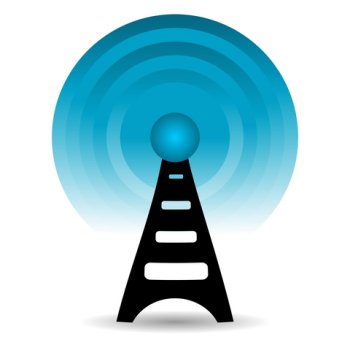This post was originally published on November 19, 2016
The latest update to this post was made 8 years ago.
 Wireless : Signal, Noise, SNR : What Do These Mean?
Wireless : Signal, Noise, SNR : What Do These Mean?
Wireless signal quality is based on 2 different variables, Signal Strength and Noise. When troubleshooting wireless issues, we often find that many are confused as to how to interpret the information found on the wireless scanning app or their access point status screen. This is a quick reference guide to assist with what Signal Strength, Noise and Signal-Noise Ratio actually means.
SIGNAL STRENGTH is measured in ‘decibels relative to a milliwatt’ (DBm). DBm in the wireless industry is measured in negative numbers, therefore, the lower negative number in DBm, the better. Signal strength DBm ranges from 0 to -100, where zero is the better signal. Example: -40DBm is better than -98DBm since -40 is closer to zero than -98.
So how do I know what a good signal for my wireless network is? Well… It depends on the application. Constant traffic devices, like phones or computers streaming video will require a much cleaner, stronger signal that a device that just bursts data, like a home wireless light controller or home energy management system. In our experience, anything higher than a -80DBm will be intermittent, frequently have drop issues, will be slow, unreliable or may not even connect. NOTE: You cannot obtain a better signal than -30DBm to -35DBm, even when standing next to an access point. These numbers are considered perfect wireless signal strength.
- A -75 to -65DBm signal is adequate for most lower traffic/burst applications.
- A -35 to -65DBm is recommended for higher throughput devices, such as tablets or computers that are streaming video on Youtube, Netflix, etc. Ideally, your wireless signal strength will fall into this range for optimal use and happy users!
How can I increase my signal strength?
- Use higher DBi antennas (available as aftermarket add-ons, for units with detachable antennas). This can apply to either the access point itself or the receiving device, such as a desktop computer with removable antenna.
- Increase the output power on your access point (if supported). Keep in mind, this will likely add more noise to the connections (see below for what this means).
- Add additional wireless access point(s) in a a repeater or WDS configuration (if your access points support these modes). This will allow for greater coverage in larger structures or structures that are multiple stories, while not requiring increased power, causing increased noise.
NOISE is the amount of background noise in your particular environment. Think of this as a cafeteria or public place, you can hear the other conversations around you, although muffled and maybe not understandable, they are present. Wireless has the same issues – with so many wireless devices literally everywhere now, the noise has increased substantially. Noise is measured in DBm (decibels relative to a milliwatt), just like signal strength is. The range is 0 to -100, where zero is the highest noise level. In this case, a larger negative number is better than a lower negative number. Example: -90DBm is a lower noise level than -15DBm, as the closer you get to zero, the higher the noise. -90 is higher than -15, which -15 is closet to zero.
SNR (Signal To Noise Ratio) is the power ratio between signal strength and noise level. These values are registered in POSITIVE DBm, unlike signal and noise which are NEGATIVE DBm. To calculate SNR, you take the difference of noise and signal strength, which are both negative numbers… Now remember math class, two negative numbers equals a positive number. With this in mind, see these examples:
- You have a signal strength of -76DBm and a noise of -95DBm.
- Your SNR is: +19DBm (-95 minus -76 equals +19)
- You have a signal strength of -55DBm and a noise of -80DBm
- Your SNR is: +25DBm (-80 minus -55 equals +25)
So what should your SNR actually be? Well, anything over +25DBm should yield good/great results. Anything below +25DBm could result in slower speeds, network drops and overall poor performance.
Tags: #wireless #wifi #signal #troubleshooting #techsupport
![]()

Be the first to comment